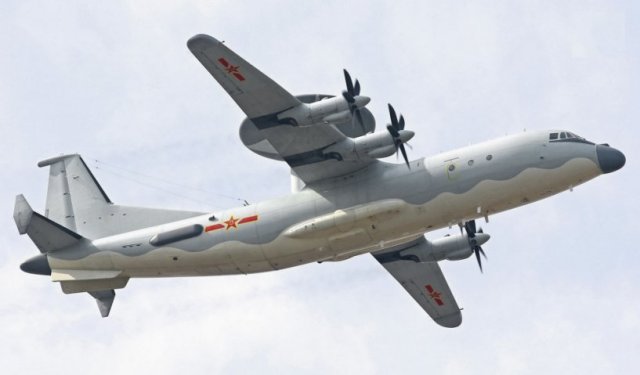Breaking news
New Shaanxi KJ-500 AEW&C aircraft enters service in China's air force.
| a | |||
| |
|||
World
Defense & Security News - China |
|||
| New Shaanxi KJ-500 AEW&C aircraft enters service in China's air force | |||
Capable of tracking
nearly 100 vehicles at once, the Chinese military has launched its new
airborne early warning and control aircraft (AEW&C) Shaanxi KJ-500,
taking to the skies with the People’s Liberation Army Air Force
(PLAAF).
|
|||
 PLAAF's Shaanxi KJ-500 Airborne Early Warning and Control aircraft |
|||
The
PLAAF has been offering sneak peeks into the existence of the KJ-500 for
months now. Late last year, it released images of the plane’s paintjob,
a wavy, sky blue with a white underbelly. But new images from the Chinese
military show the aircraft now that it’s entered service. A slightly smaller version of an earlier four-turboprop plane, the KJ-500 is fixed with a phased-array radar developed by the Nanjing Research Institute of Electronic Technology. The array consists of three parts, all housed within a saucer-shaped dome atop the aircraft. That dome also features a satellite communications antenna, as well as two passive electronic intelligence arrays. Built by the Shaanxi Aircraft Corporation, developers had also considered a tear-drop shaped dome, which would have allowed larger radar systems to be installed, but that plan was later scrapped. AEW&C aircraft can carry out surveillance operations over both ground and sea-based targets. Air-based radar allows for better detection, and has enhanced abilities of distinguishing between friendly and hostile aircraft. The plane’s high altitude also makes it harder for enemies to spot. The KJ-500 apparently will succeed production of the KJ-200 AEW&C system, which uses a linear phased-array radar that is strikingly similar to the Saab Erieye radar but that allows only for a 240° field of view. China
isn’t the only one with new surveillance aircraft in the region.
Last month, the US Navy admitted that it was launching P-8A Poseidons
out of bases in the Philippines. The Pentagon’s most advanced
spy planes, the Poseidons are monitoring the contentious waters of the
South China Sea, where various nations – including China –
claim overlapping territories. |
|||






















